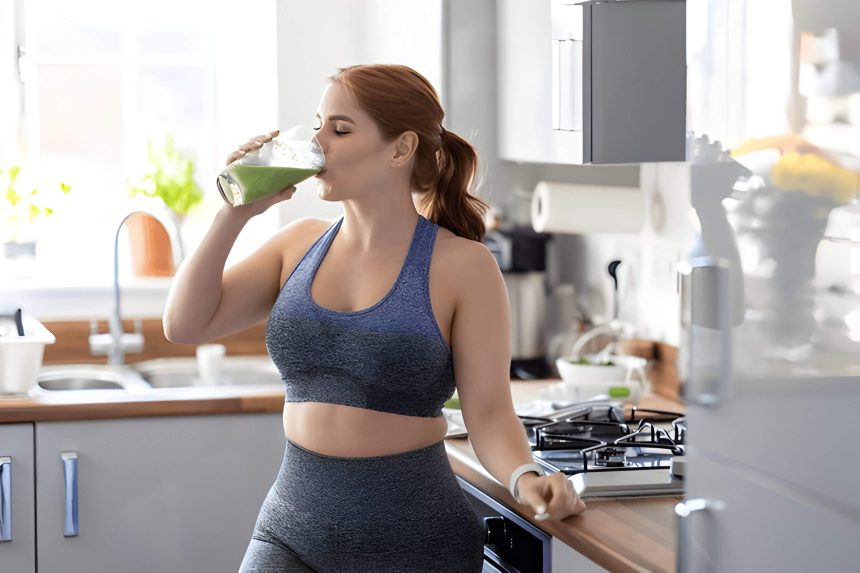A liquid diet to reduce weight can be both promising and challenging. This guide explores its benefits, potential issues, and nutritional considerations. We cover the science behind liquid diets, how to create a personalized plan, and transitioning back to solid foods, offering a compassionate roadmap for those seeking wellness through this method.
Understanding the Liquid Diet to Reduce Weight
A liquid diet is a dietary regimen that primarily consists of consuming liquids or foods that turn into liquid at room temperature. This approach to nutrition can serve various purposes, from medical necessity to weight loss goals. There are several types of liquid diets, including clear liquid diets, full liquid diets, and meal replacement shakes.
Clear liquid diets typically include water, broth, and clear juices, while full liquid diets may incorporate smoothies, pureed soups, and milk-based drinks. These diets are often prescribed before or after certain medical procedures to ease digestion or as a short-term solution for specific health conditions.
One of the potential benefits of liquid diets is weight loss. By restricting calorie intake and providing easily digestible nutrients, liquid diets can lead to rapid weight reduction. However, it’s crucial to approach liquid diets with caution, as they may not provide all the necessary nutrients for long-term health.
Nutritional considerations are paramount when embarking on a liquid diet. It’s essential to ensure that the diet includes a balance of macronutrients (proteins, carbohydrates, and fats) and micronutrients (vitamins and minerals).
The Science Behind Liquid Diets and Weight Reduction
Embarking on a liquid diet journey can be a challenging yet potentially rewarding experience for those seeking weight reduction. The science behind this approach is rooted in several key factors that work together to support your body’s natural processes.
Calorie restriction is often the primary mechanism at play, as liquid diets typically provide fewer calories than solid food meals. This reduction in caloric intake can create a deficit, encouraging your body to tap into its fat stores for energy. However, it’s crucial to ensure that you’re still receiving adequate nutrition to support your overall health.
Many individuals find that liquid diets help with appetite control. The combination of proteins, fibers, and fluids can promote a feeling of fullness, potentially reducing overall food intake. This can be particularly helpful for those who struggle with portion control or frequent snacking.
Liquid diets may offer your digestive system a much-needed rest. By consuming easily digestible liquids, your body can focus its energy on other processes, potentially aiding in overall healing and rejuvenation.
Remember, while liquid diets can be effective for short-term weight loss, it’s essential to approach them with care and ideally under the guidance of a healthcare professional. Your well-being is paramount, and a balanced approach to nutrition will always be the cornerstone of sustainable health and weight management.
Essential Nutrients in a Liquid Diet
A liquid diet can be a valuable tool for various health and medical reasons, but it’s crucial to ensure you’re receiving all the essential nutrients your body needs. Protein shakes are an excellent source of amino acids, which are vital for muscle maintenance and repair. These shakes can be customized with added vitamins and minerals to boost their nutritional value.
Vegetable juices offer a concentrated dose of vitamins, minerals, and antioxidants. They’re particularly beneficial for increasing your intake of leafy greens and other nutrient-dense vegetables that might be challenging to consume in large quantities otherwise. Fruit smoothies, when prepared with whole fruits, provide natural sugars, fiber, and a wide array of vitamins. They can be an excellent way to satisfy sweet cravings while maintaining a liquid diet.
Meal replacement drinks are designed to provide a balance of macronutrients and micronutrients, mimicking the nutritional profile of a complete meal. These can be especially useful for individuals who need to maintain balanced nutrition while on a liquid diet for an extended period.
To ensure you’re meeting all your nutritional needs, it’s important to vary your liquid intake and consult with a healthcare professional or registered dietitian. They can help you create a personalized plan that includes the right mix of protein shakes, vegetable juices, fruit smoothies, and meal replacement drinks to support your health goals while on a liquid diet.
Step-by-Step Guide to Creating Your Liquid Diet Plan
Crafting a well-balanced liquid diet plan requires careful consideration and planning. Begin by consulting with a healthcare professional to ensure your nutritional needs are met. Start with meal planning, focusing on incorporating a variety of nutrient-dense liquids such as vegetable and fruit juices, smoothies, and protein shakes. Pay attention to portion control, as liquid calories can add up quickly. Aim for 5-6 small “meals” throughout the day to maintain energy levels and prevent hunger.
Hydration is crucial, so include water, herbal teas, and clear broths between your liquid meals. For those on extended liquid diets, supplementation may be necessary to avoid nutrient deficiencies. Consider adding multivitamins or specific supplements as recommended by your healthcare provider.
When transitioning back to solid foods, take a gradual approach. Start with soft, easily digestible foods and slowly reintroduce regular items to your diet. This step-by-step process helps your digestive system readjust and minimizes potential discomfort. Remember, a liquid diet is often temporary, so focus on meeting your nutritional needs while working towards your health goals.
Overcoming the Challenges of a Liquid Diet to Reduce Weight

Embarking on a liquid diet for weight loss can be challenging, but with the right strategies, you can overcome common obstacles. Hunger management is crucial; consider incorporating protein-rich smoothies and broths to increase satiety. Timing your liquid meals strategically throughout the day can also help curb cravings.
Navigating social situations while on a liquid diet requires preparation. Inform friends and family about your dietary goals, and suggest activities that don’t revolve around food. When dining out, opt for clear soups or vegetable juices to stay on track.
Emotional eating can be a significant hurdle. Develop alternative coping mechanisms such as meditation, journaling, or engaging in a hobby to address emotional triggers without turning to food.
Staying motivated is key to success. Set realistic goals, track your progress, and celebrate small victories along the way. Visualization techniques can help you stay focused on your end goal.
Joining support groups, either online or in-person, can provide invaluable encouragement and advice from others on similar journeys. Sharing experiences and tips can boost your morale and help you stay committed to your weight loss plan.
While a liquid diet can jumpstart weight loss, it’s essential to transition to a balanced, sustainable eating plan for long-term success.
Additional Health Benefits of a Liquid Diet
While many people turn to liquid diets for weight loss, these regimens offer a range of health benefits that extend far beyond shedding pounds. One of the primary advantages is detoxification, as liquid diets can help flush out toxins from the body, giving your organs a much-needed break from processing solid foods. This detox effect often leads to improved digestion, as the digestive system has less work to do and can reset itself.
Many individuals report experiencing increased energy levels while on a liquid diet. This boost in vitality may be attributed to the easy-to-digest nutrients and reduced energy expenditure on digestion. Additionally, better sleep is a common benefit, as the body isn’t working overtime to process heavy meals before bedtime.
Another notable advantage is clearer skin. The high water content and nutrient-dense nature of most liquid diets can contribute to improved hydration and nourishment of the skin from within. This often results in a more radiant complexion and reduced occurrence of skin issues.
While these benefits are promising, it’s crucial to approach liquid diets with caution and preferably under professional guidance to ensure you’re meeting all your nutritional needs.
Transitioning Back to Solid Foods
After completing a liquid diet for weight loss, reintroducing solid foods requires careful planning and mindfulness. Begin by gradually incorporating soft, easily digestible foods into your diet. Start with small portions of steamed vegetables, lean proteins, and whole grains. This gradual approach allows your digestive system to readjust and helps prevent discomfort.
Portion awareness is crucial during this transition phase. Use smaller plates and practice mindful eating to avoid overeating. Pay attention to your body’s hunger and fullness cues, eating slowly and savoring each bite. This habit will help you maintain your weight loss and prevent rapid regain.
To sustain your weight loss progress, focus on developing healthy habits. Continue to prioritize nutrient-dense foods and limit processed items. Incorporate regular physical activity into your routine to support your metabolism and overall health. Stay hydrated by drinking plenty of water throughout the day.
The transition back to solid foods is an opportunity to establish a new, balanced relationship with food. By maintaining portion control, practicing mindful eating, and embracing a healthy lifestyle, you can successfully navigate this phase and continue your weight management journey.
